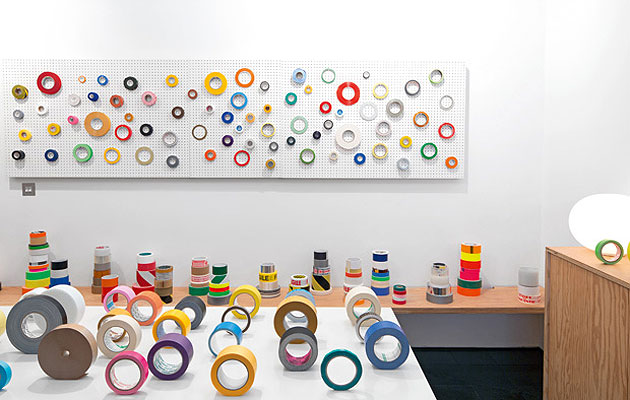|
|
||
|
ICON We saw Tapes of the World, a mini-exhibition at your Shoreditch studio, during London Design Festival. In 2010 you showed Trays of the World. Why do you like collecting these things? JM I should start by saying I’m not much in to collecting at all. The idea is to gather as many examples of a type that we can find, to show how diverse familiar object types can be. We might think of a jug, and picture an archetypal jug shape, possibly one we grew up with, or the image which is commonly used to represent jugs in cartoons or illustrations, when in fact there are hundreds, even thousands of jug shapes and variations. I think this variety is an example of the global cultural richness of everyday life and something worth emphasising. ICON Can you tell us what you have been working on recently? JM The Lightwood chair (2011) started with an idea to avoid the problem of weight which solid wooden chairs can have. It grew out of the idea of a frame which could be covered with lightweight materials like webbing, mesh or upholstery supported by mesh. It’s a relative of the Chiavari and Shaker chairs of course, and it benefits from the amazing quality of the Japanese producer Maruni. I like working with existing typologies, trying to improve or update them rather than trying to create something never seen before. ICON And the cast-iron kitchenware for Oigen (2012)? JM The cast-iron project was coordinated by the Japan Creative initiative as part of a wider project to promote Japanese craft-based manufacturing. I’ve always wanted to work with cast-iron – it’s a beautiful and slightly mysterious material, maybe due to its age. Of the pieces I designed for the collection, there’s one that is a bit of a departure for me. It’s a small tray with three bowls in it for serving salt, pepper, mustard, almonds, etcetera. It’s quite figurative, with a long thin handle resembling a palm tree growing out of the centre of what might be a small desert island. I’m not sure where that came from but I like it being so expressive, decorative in a way, but still completely functional. ICON You also designed a marble table for Marsotto this year. JM That table comes from some much smaller concrete tables I noticed in Pondicherry, India several years ago. Their shape stayed in my mind all this time and finally re-emerged in marble. ICON What kind of objects do you admire? JM I like objects that look natural, balanced and catch the eye for the right reasons. I know it sounds a bit boring but after all these years of looking at things I’ve developed an allergy to anything showy unless it has good reason to be. ICON Is there such a thing as a British design culture? Or is it more important for British designers to have universal appeal? JM I didn’t used to think so, but following Established & Sons and being aware of a younger generation of British designers I think there probably is something of a national design characteristic – a bit eccentric, highly creative, with a wry humour. ICON Did you see any of the shows during last year’s London Design Festival? JM I didn’t get to see a lot, I caught the last moments of Designjunction in Bloomsbury which I found a bit disappointing after all the talk. I saw the V&A bench project which I was a part of, I enjoyed the Conran Red exhibition and the Jane Withers curated exhibition [4 Cromwell Place] in South Kensington. |
Image Nicola Tree
Words Riya Patel |
|
|
||



















